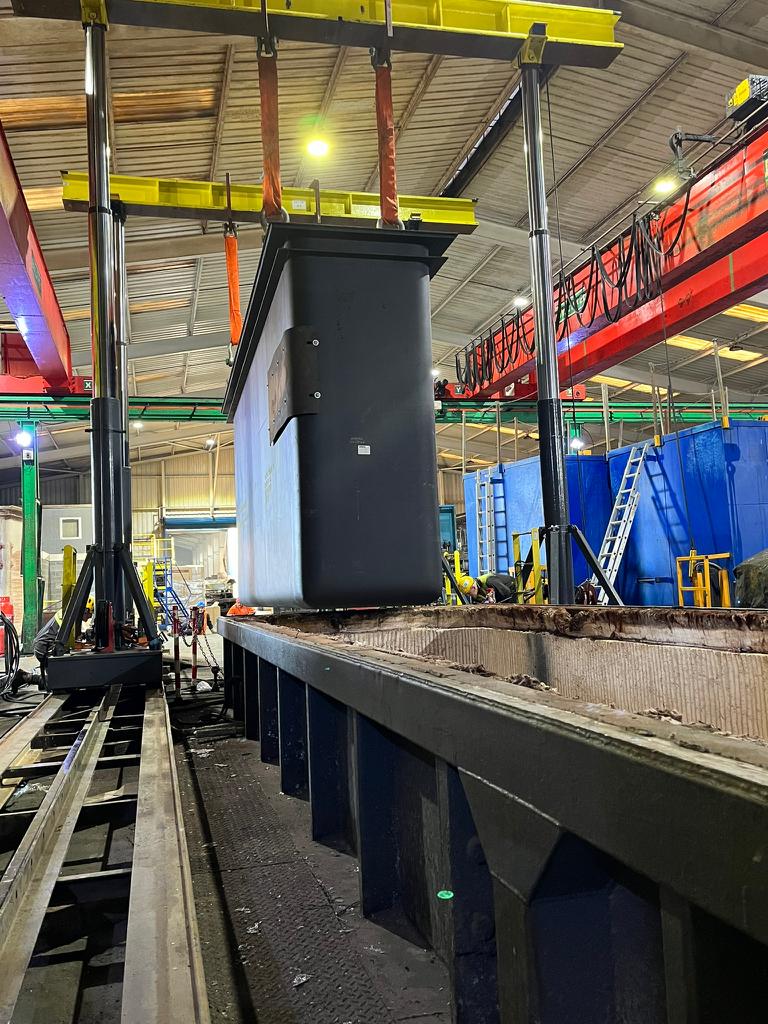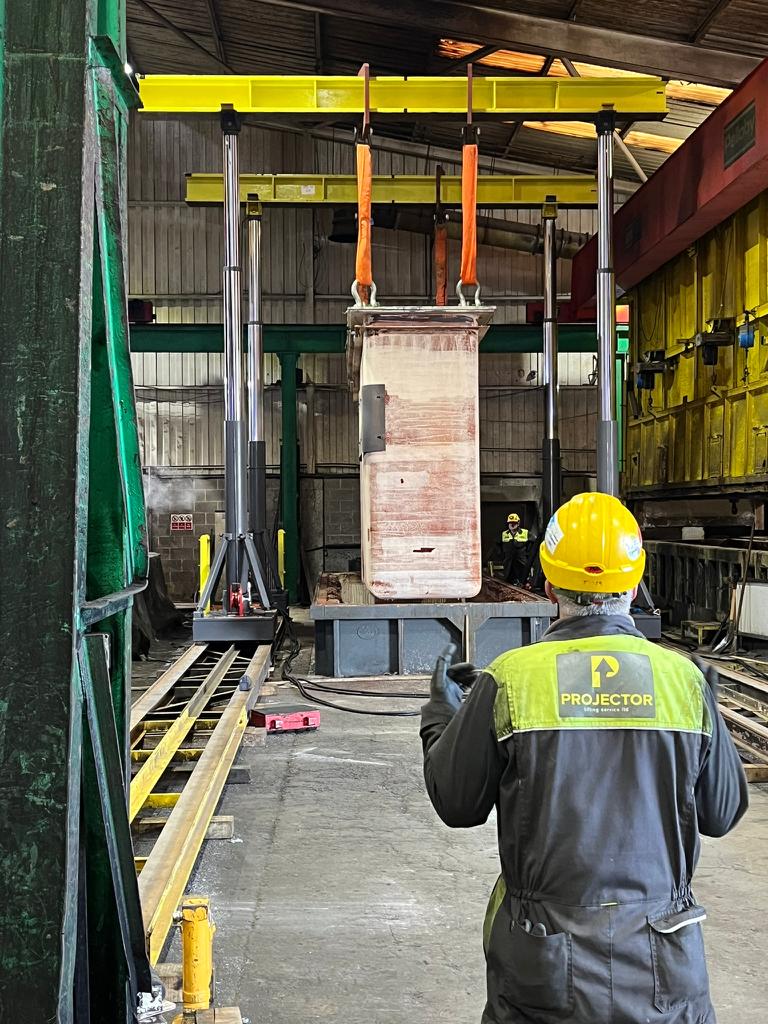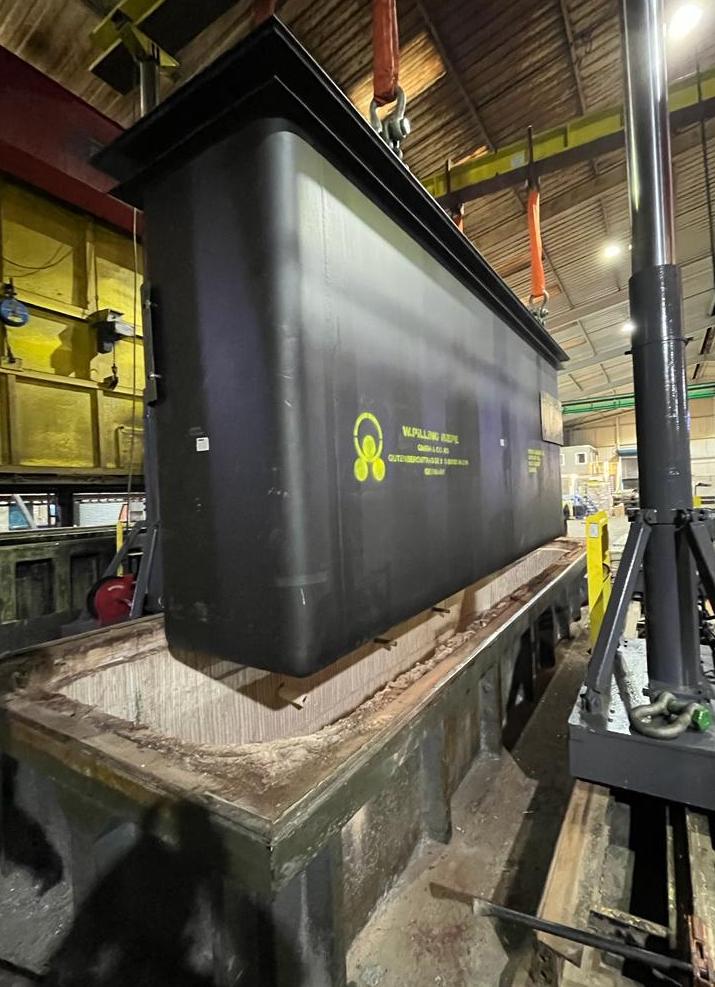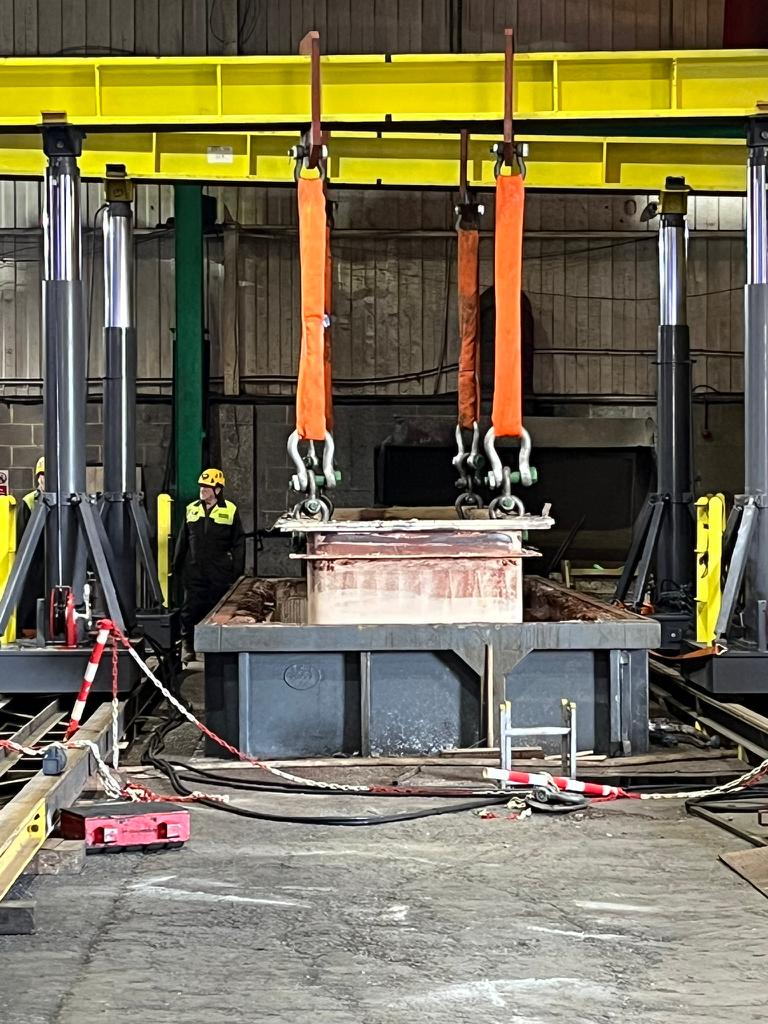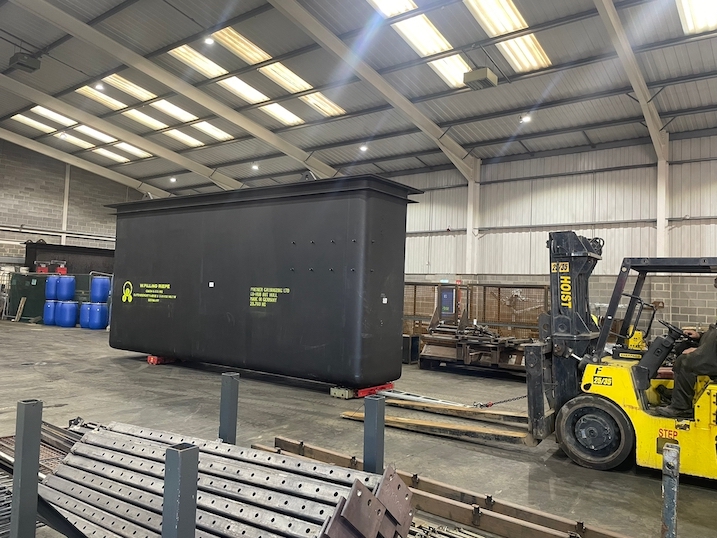Dalit Singh’s incredible 45 year anniversary
2023 is the year of incredible long service milestones, as Dalit Singh recently celebrated 45 years at the Company! It was only last month on Valentine’s Day that Mick Jackson celebrated 40 years at Joseph Ash Galvanizing. Now, Dalit from Joseph Ash Walsall has his long service recognised.
Dalit started working for Joseph Ash in March 1978. He has worked through every role in the Walsall galvanizing plant, including Shift Supervisor for over 12 years.
Dalit first started his job with a company called Walker Brothers Galvanizing. The company was later taken over by Hill & Smith, Joseph Ash Galvanizing’s parent company. His first job was in Jigging Materials, and he then moved to become a Pot Man before his aforementioned Shift Supervisor role.
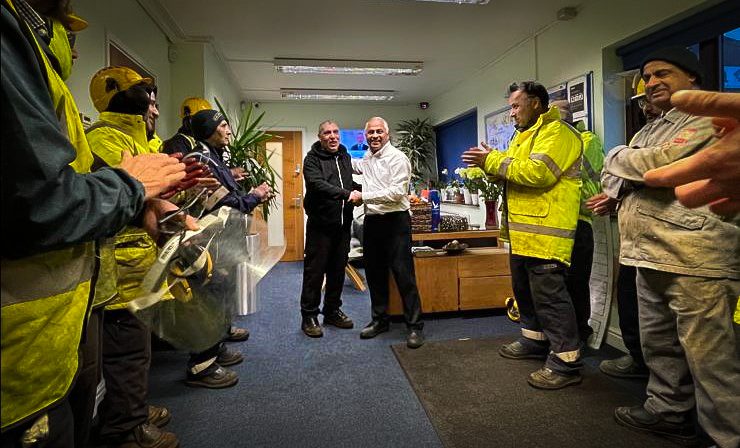
Amy Leachman from Joseph Ash Walsall commented on Dalit’s 45 years:
“Through his time, he has been a fantastic employee, with vast experience in our industry and someone that the division has been able to rely on. I personally have learned from Dalit’s expertise during my time spent with the production team and can see just how important a role he has played!”
Thank you for all your years of service, Dalit!
Next pageThe Easter Holidays are fast approaching, which means our plants’ opening times will be affected.
All plants will be closed over the Easter bank holiday. If you’re looking for metal treatment services soon, please note these closures and make sure to book your projects for galvanizing in advance.
Every plant will be closed on Friday, 7 April and Monday, 10 April 2023. The plants will reopen on Tuesday, 11 April 2023.
We hope you have a well-deserved break!


As the UK is experiencing high levels of inflation and energy and food price hikes, low-income families have been hit the hardest and more people are turning to food banks for help.
With Easter fast approaching, most of us look forward to our chocolate fix. However, many families can’t afford the food they need, let alone the luxury of a chocolate egg.
With this in mind, Charlie Singh (Divisional Manager) and his team at Joseph Ash Walsall are trying to raise as much money as possible to support Breaking Bread, a food bank in the Midlands by providing them with Easter Eggs and other food products to ensure many more families can enjoy the things most of us take for granted over the Easter period.
Please help us make a real difference by visiting the Just Giving page and donating. No matter how small, any amount will be appreciated, and you can donate anonymously (if you prefer).
Further information is on the Just Giving page.
Alternatively, it is quick and easy to donate simply by scanning the QR code.

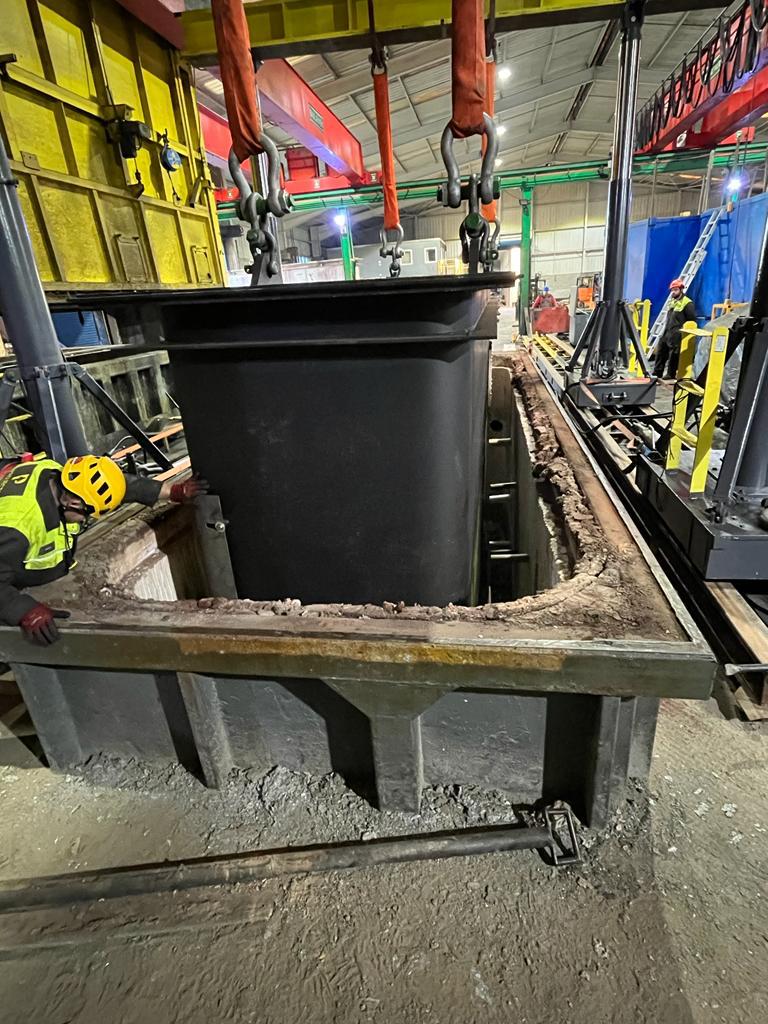
We’re pleased to announce the recent installation of a new galvanizing kettle at our Premier Galvanizing Hull plant.
It’s quite a logistical exercise to remove an existing kettle and replace it with a new one. Commissioning and planning the changeover takes months. And the installation – including removing/recycling existing zinc, dismantling the bath, fitting a new bath, and adding new zinc ingots – takes a whole week. The bath also had to be transported from Germany first!
The bath dimensions are the same as before: 7m length x 1.2m wide x 3.2m deep. However, it has a thicker wall than previously (now 60mm instead of 50mm).
For health and safety reasons, it’s typical to change galvanizing baths every 7-10 years as the wall thickness degrades over time, specifically in areas with a temperature difference, such as the ‘wash line’ and above the Dross protection. Structural integrity is crucial for health and safety, so even though we still had a few years left in our previous bath, we always opt for the cautionary approach.
Thanks to W. Pilling in Germany who provide all our kettles, and the following companies who helped with the installation: Projector Lifting Service, Zinco, Westech and Thermetal Metallurgical Furnace Engineers.
Next pageWe’ve recently launched a new set of company values for the Joseph Ash Group. They are collectively called ‘Our Chemistry’ – to reflect our excellent relationships with each other, our clients, suppliers and partners, and the chemicals we use in our galvanizing processes.
To create the values, we held several focus groups across the plants to find out what was important to our team members and what values they wanted to live by at Joseph Ash. We spoke to colleagues on the shop floor, administration and service teams at Head Office, and Commercial Teams at our different divisions. Everyone was offered the opportunity to share their thoughts on what our culture and behaviour look like when we’re at our best and what needs to be added to ensure the Joseph Ash Group thrives and grows. The resulting values are:

We thrive on team spirit, whether we’re looking out for each other’s safety or working together to meet targets. Providing help and assistance, celebrating achievements, and laughing are the elements that bind us together. We have each other’s backs.

The safety and success of our business and our future sit in our hands. We know what is expected of us as individuals and teams and demonstrate a ‘can-do’ attitude to get things done.

Growth through teaching and learning (internally and externally) is the catalyst for everything we do. We lead with experience and heritage, but we’re also enthusiastic about advancing and improving our products, processes, the industry and ourselves.

We respect each other and our differences and treat people as we want to be treated ourselves. We mix kindness with good manners and listening skills. We also appreciate family: not only in our home lives but also in the family we have at work.
If you’d like to know more – or if you’d like to join our team – please get in touch!
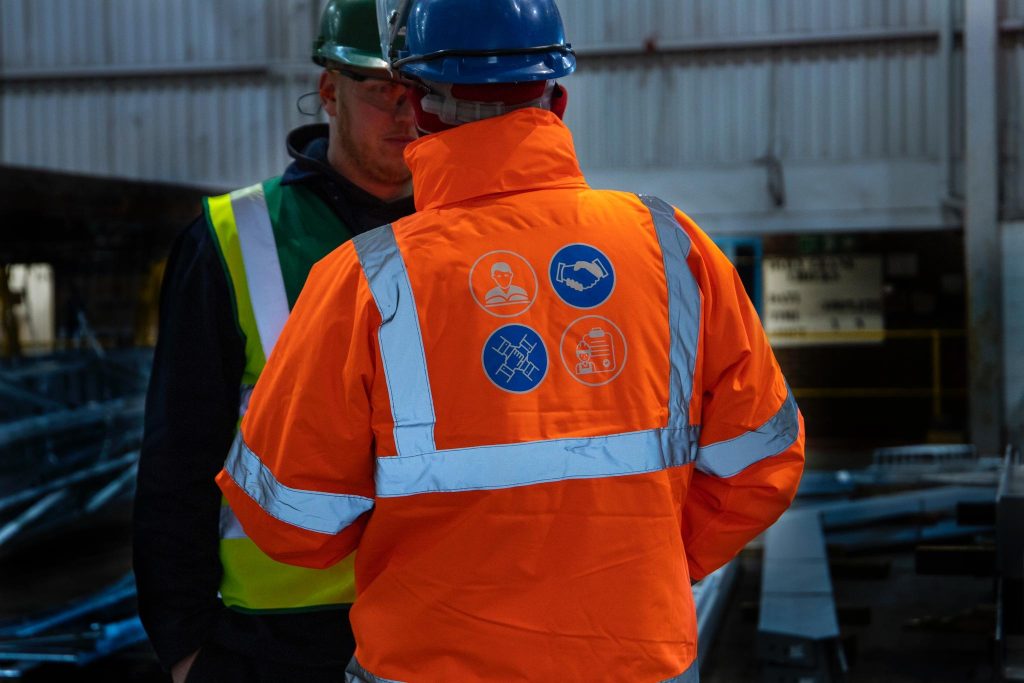

Stephanie Harding has joined the Joseph Ash Group as our new Commercial Manager for the Chesterfield plant.
Stephanie brings a strong background in manufacturing, having worked 10 years in the plastics recycling industry for Regain Polymers Ltd and Preston Plastics Ltd.
Holding Head of Purchasing, Commercial Manager and Group Executive Manager roles at these companies, Stephanie honed her buying, sales, forecasting, management, people development, and customer relationship management skills. The perfect skillset for this new role.
At Joseph Ash, Stephanie will be responsible for the commercial activity at Chesterfield, reporting to Martin Hall (Divisional Manager) to help deliver the plant’s five-year strategy. She will also lead the Commercial team (six people).
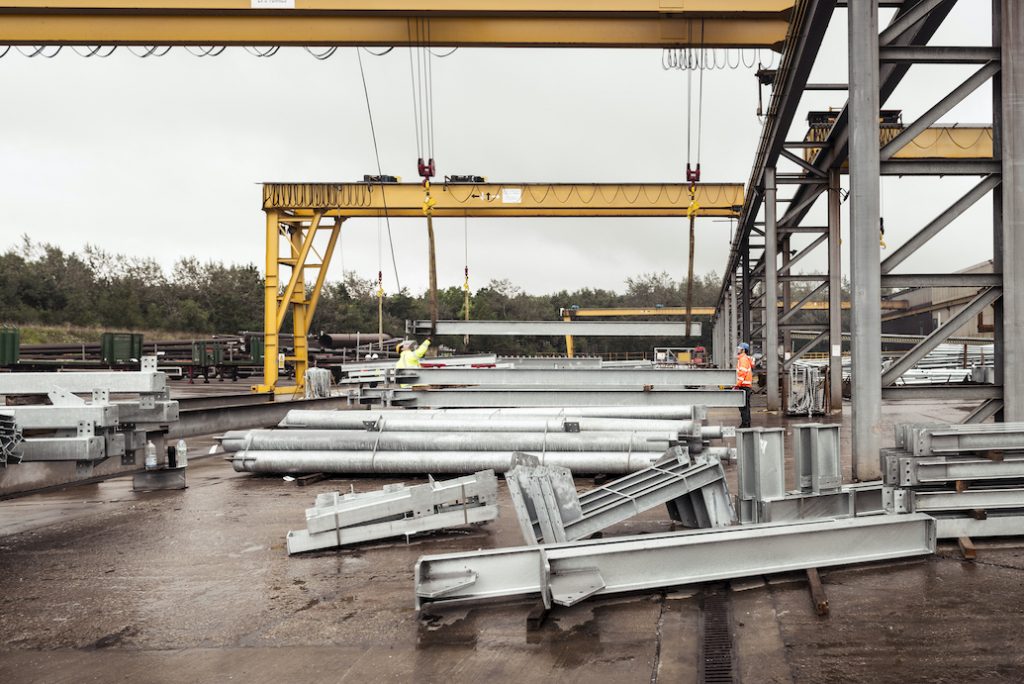
When asked why she joined the Joseph Ash Group, Stephanie said, “Lots of reasons! Firstly, I like the company’s ethos: it’s forward-thinking and has the right values. I like the environment, too, as people seem to have drive, passion and focus. I also enjoyed meeting Martin and felt we were on the same wavelength regarding how to grow a business.”
In her spare time, Stephanie enjoys family time and trying new activities such as paddle boarding and indoor skydiving. She also loves to travel.
In the next few months, she plans to visit many customers and the eight other Joseph Ash Group plants.
Please join us in welcoming Stephanie to the company! You can reach her on 07827 078 881 or at stephanieh@josephash.co.uk.
Next pageHow the updated standard affects the galvanizing industry and customers
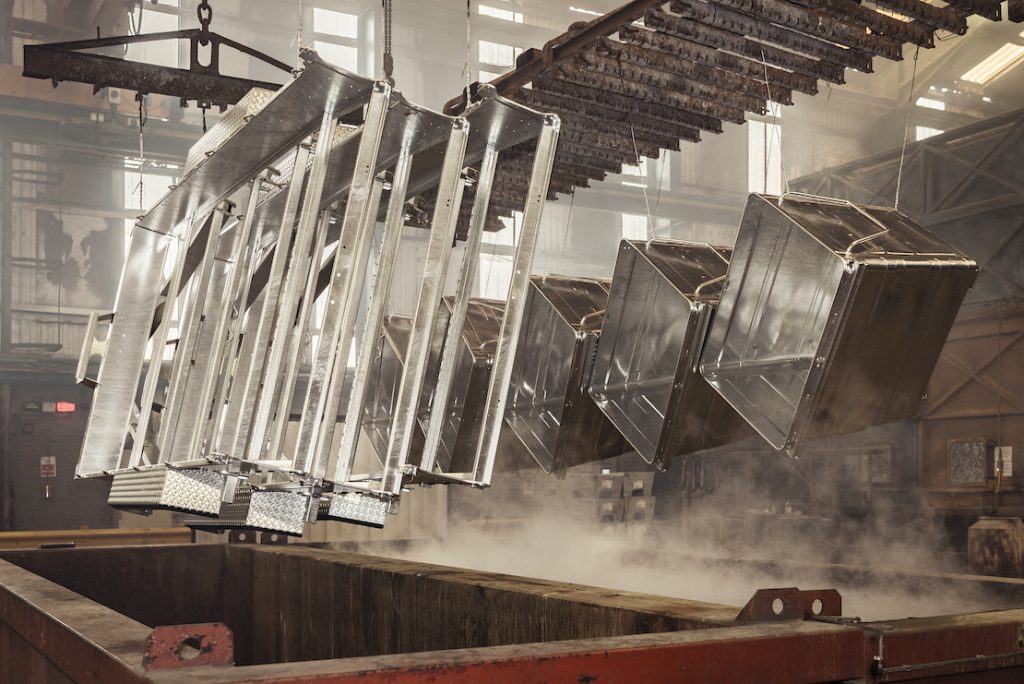
Some important revisions to ISO 1461 – the British Standard for hot dip galvanized coatings on iron and steel articles – have recently been made. The new 2022 version supersedes the 2009 version.
The standard will be adopted by CEN (the European Standards Organization) and subsequently by National Standards Bodies, including BSI in the UK and the National Standards Authority of Ireland.
Several important changes have been made to the document. As the changes affect both us – as galvanizers – and you – our customers – we’ve listed them below:
Summary of major changes
The most significant changes to the document concern the galvanizing of ultra-low reactive steels, coating thickness measurements on ancillary elements, removal of flux residues and zinc ash, and the renovation of galvanized steelwork.
There has been no fundamental change to the method of assessment of coating thickness, but allowances for measurements on ancillary elements and ultra-low reactive steels have been introduced. The revised standard states that thickness measurements should not be taken on ancillary elements (e.g. brackets) unless specifically requested by the customer. Recognition that certain steel compositions can exhibit ultra-low reactivity during galvanizing (i.e., cannot satisfy the standard minimum coating thickness requirements) has been introduced. Articles produced from steel with a section thickness greater than 3mm which have a composition of ≤0.01 % silicon AND an aluminium content >0.035 %, that exhibit ultra-low reactivity during galvanizing, can now be subject to lower coating thickness requirements (see 6.5 below). The variation to the standard requirements must be included in the Declaration of Compliance if one is to be provided.
An important change has been made with regards to removal of flux residues. In the 2009 version, flux staining/residues were not permitted anywhere on the article, but the updated version now acknowledges that removal (including zinc ash) in some fabrications is practically impossible. Therefore, if ‘access is restricted, for example inside hollow sections’ flux residues and zinc ash are permissible.
The key changes to the content on renovation of galvanized steelwork are the requirement for the pigment in a zinc-rich paint to conform to ISO 3549 ‘Zinc dust pigments for paints — Specifications and test methods’ which has been removed but must still offer sacrificial protection to the steel; and also, more comprehensive information within Annex C – Renovation of uncoated or damaged areas.
Changes in ISO 1461:2022 vs 2009 edition
1 Scope – No significant changes were made to the scope, however clarification to clearly state the standard specifies the general properties of, and test methods for, ‘hot dip galvanized’ coatings were incorporated.
2 Normative references – There has been slight changes to the standards contained within the normative references to reflect their status within the document. Notably, ISO 14713-2 ‘Zinc coatings — Guidelines and recommendations for the protection against corrosion of iron and steel in structures — Part 2: Hot dip galvanizing’ has been included.
3 Terms and definitions – Five new terms, galvanizer (3.3), after-treatment (3.18), additional coating (3.19), wet storage stain (3.20), duplex system (3.21) have been introduced to allow for simplification of the main text.
4 General Requirements – No significant changes.
5 Acceptance inspection and sampling – No significant changes, except the minimum number of articles in a control sample can be subject to deviation following agreement within the supply chain. The new text now reads ‘Unless otherwise agreed, the minimum number of articles from each inspection lot that forms the control sample shall be in accordance with Table 1.’
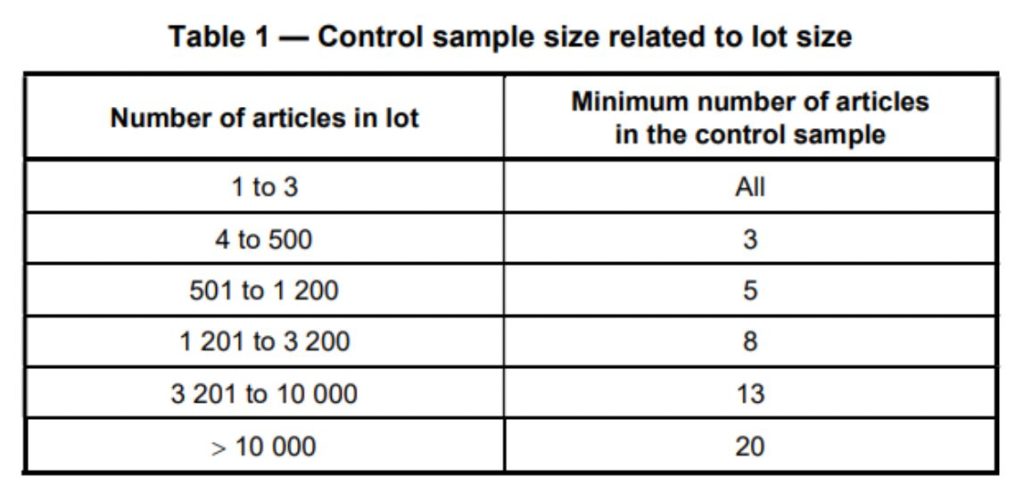
6.1 Galvanized coating properties – Appearance – Clarification has been made that only the visible significant surfaces are subject to the appearance acceptance inspection. Flux residues and zinc ash shall be removed where they can affect the intended use of the HDG article, or its corrosion resistance requirement, unless access is restricted, for example inside hollow sections. Previously, flux residues were not permitted anywhere on the article.
The coating, when first examined by normal vision from a distance of not less than 1m shall be free from blisters (i.e. raised areas without solid metal beneath), roughness and sharp points (if either that roughness or sharp point can cause injury) and uncoated areas. The 2009 version also included ‘Nodules’, however this has now been omitted from the list of prohibited coating features.
6.2 Galvanized coating properties – Thickness – The greater relevance of ISO 2178 ‘Non-magnetic coatings on magnetic substrates — Measurement of coating thickness — Magnetic method’ amongst the other coating thickness measurement standards has now been acknowledged.
6.2.3 – Reference areas – now states that ‘Unless otherwise agreed, reference areas shall not be chosen from ancilliary elements, when they are significantly smaller than the main elements of a larger article’ due to being thinner or less reactive. Acceptance that flame-cutting, laser-cutting and plasma-cutting can lead to the steel being more unreactive during galvanizing and decreased cohesion of the coating has been made. The 2022 edition now reads ‘In order to obtain the required coating thicknesses more reliably and to ensure adequate cohesion or adhesion of the coating, flame-cut, laser-cut and plasma-cut surfaces should have been ground off and sharp edges should have been removed during fabrication and prior to delivery to the galvanizer.’
The minimum size of a reference area is now clearly defined as being 10cm2.
6.3 – Galvanized coating properties – Renovation – The circumstances where a lower (than 100μm) minimum repair coating thickness can be agreed, has been expanded to account for thinner galvanized coatings around the damaged area, for example, where aesthetics may be important.
6.4 – Galvanized coating properties – Adhesion – No significant changes, however a new ‘note’ has been added which recognises that cohesion of the galvanized coating can be affected by a steel being ultra-low reactive – as defined in ISO 14713-2 Table 1, Note 4. There is still not a suitable international standard for testing the adhesion of galvanized coatings.
6.5 – Galvanized coating properties – Acceptance Criteria – It is within this section where the adjustment for ultra-low reactive steels has been introduced. The new text reads:
‘For articles with steel section thicknesses greater than 3 mm, produced from steels with compositions ≤0,01% silicon that also have aluminium contents >0,035%, that exhibit ultra-low reactivity during galvanizing and therefore cannot satisfy the minimum galvanized coating thickness in Table 3, the next lowest category of steel article section thickness given in Column 1 of Table 3 shall be applied. In such cases, if a declaration of compliance must be provided then it shall state this variation including the adjusted minimum mean galvanized coating thickness requirement that has been applied to the inspection lot.
NOTE – Certain steels, including but not limited to, either steels suitable for laser cutting with chemical compositions as given in ISO 14713-2:2019, Table 1, Note 4 or steels with high surface smoothness, or both, can exhibit ultra-low reactivity during galvanizing (see ISO 14713-2) and the coating thickness achieved on such steel articles can possibly not be dependent on steel section thickness. These factors are beyond the control of the galvanizer and can also result in even lower coating thicknesses than given in the next lowest category of steel article section thickness given in Table 3.’
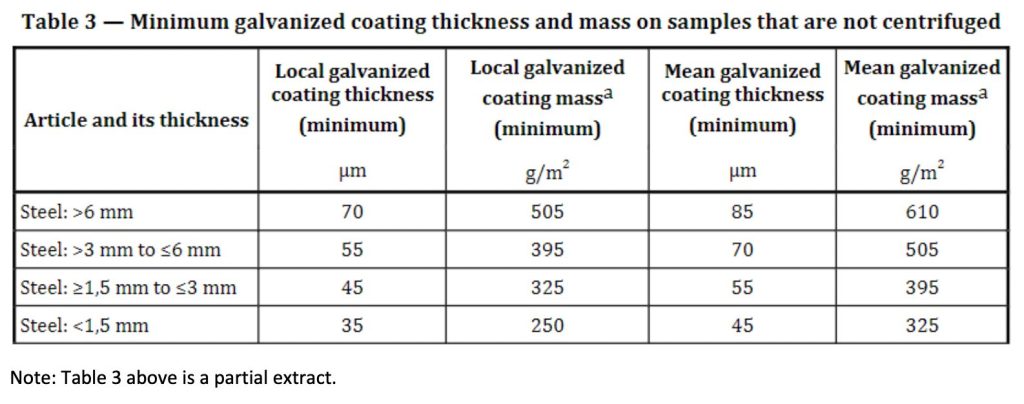
7 – Declaration of Compliance – The terminology has been modified, in ISO 1461:2009 this was referred to as a ‘Certificate of compliance’ whereas now it is called a ‘Declaration of compliance’. Clarification that this must meet the requirements of ISO 10474 ‘Steel and steel products — Inspection documents’ has been incorporated.
Annex A (normative) – Information to be supplied – An important sentence has been added to A.2– Additional information for provision by the purchaser, which states that ‘an indication of any ancillary elements within the article that must be considered as part of the significant surfaces from which reference areas might be taken (e.g. if the ancillary elements are safety critical).’ This is to account for the default procedure of not taking coating thickness measurements on ancillary components.
Annex B (normative) – Safety and process requirements – Venting and Drainage of Articles – Verification has been incorporated into this Annex that states the work presented for galvanizing should be in accordance with ‘either the guidance given in ISO 14713-2 or any further specific guidance for the articles to be processed that may arise from consultations with the galvanizer, or both.’
Annex C (informative) – Renovation of uncoated or damaged areas – Annex C contains considerably more guidance on the requirements for a zinc-containing paint used for repair than the previous version (Annex C.1 – Zinc-containing paints). See new guidance below.
‘A dry paint film that is capable of conducting electricity and which is in electrical contact with the basis metal will ensure that sacrificial protection is provided.
Other things being equal, sacrificial protection increases with increases in metallic zinc content in the dried film but does not increase further above approximately 94% by weight of zinc for paints containing zinc dust. However, other factors can be important.
A zinc-containing paint with a zinc dust content that is equal to or greater than 80% by mass in the dry film can be considered suitable for renovation of uncoated or damaged areas. Conformity of the zinc dust pigment, within a zinc-containing paint, with ISO 3549 is a further indication of suitability.
Zinc-containing paints based on lamellar shaped, rather than spherical, zinc particles may achieve adequate protection at lower contents of zinc in the dry film than for zinc dust paints with spherical particles.
Zinc-containing paints may also include an aluminium content for aesthetic purposes.’
Annex D (informative) – Determination of thickness – No significant changes.
Annex E (informative) – Corrosion resistance of galvanized coatings – Annex E has been updated to include supplementary information regarding the long-term, steady-state zinc corrosion rates given in ISO 9224 ‘Corrosion of metals and alloys — Corrosivity of atmospheres — Guiding values for the corrosivity categories.’ This is in appreciation that ISO 14713-1 ‘Zinc coatings — Guidelines and recommendations for the protection against corrosion of iron and steel in structures — Part 1: General principles of design and corrosion resistance’ provides first year exposure corrosion rate data and is therefore conservative guidance.
Further information and support
If you have any queries regarding the updated standard, please contact the Joseph Ash Galvanizing Technical Team
You can also contact the Galvanizers Association Technical Department regarding the updated standard or its interpretation. Call their free Service Line on telephone: 0121 355 8838 or email Dr Desmond Makepeace at d.makepeace@hdg.org.uk.
Next page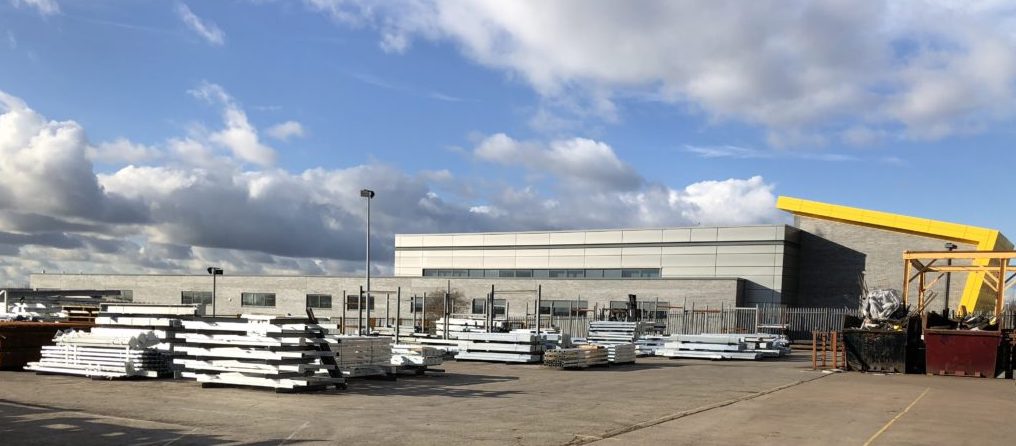
We are delighted to announce the acquisition of Widnes Galvanising Ltd by Joseph Ash Ltd.
Founded over 20 years ago, Widnes Galvanising has been an independent hot dip galvanizer in the northwest. It is the perfect match for Joseph Ash Limited. Not only do we share similar values – including a mission to provide the very best customer service – but we’re now able to broaden our geographic coverage into Cheshire to service customers in Lancashire, Cheshire, Merseyside and beyond.
The acquisition is also good news for Widnes Galvanising customers, who will benefit from the additional services Joseph Ash Limited provides. For example, extra transport and storage, spin galvanizing, and powder coating.
Our new colleagues from Widnes will also benefit as they will be able to capitalise on the opportunities that being part of a larger group brings, such as career progression, training, and learning new skills.
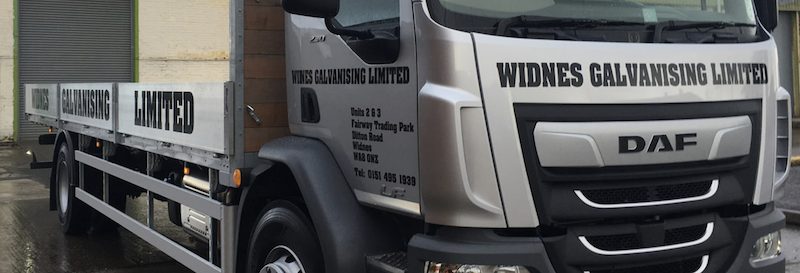
Stuart Whitehouse, Managing Director of Joseph Ash Limited, said: “Widnes Galvanising is a welcome addition to our Joseph Ash family, and we are thrilled to have them onboard. The acquisition has been smooth, ensuring a seamless transition for the future. While initially trading as a subsidiary company, Widnes will share and exchange technology and expertise with our eight other plants.”
Whitehouse continues, “The acquisition is a wonderful opportunity for all parties involved: the existing Joseph Ash team, our new colleagues from Widnes, our suppliers and customers.”
Further announcements about the acquisition will be made in due course.
For more information, please contact our Head Office on 0121 504 2573.
Next page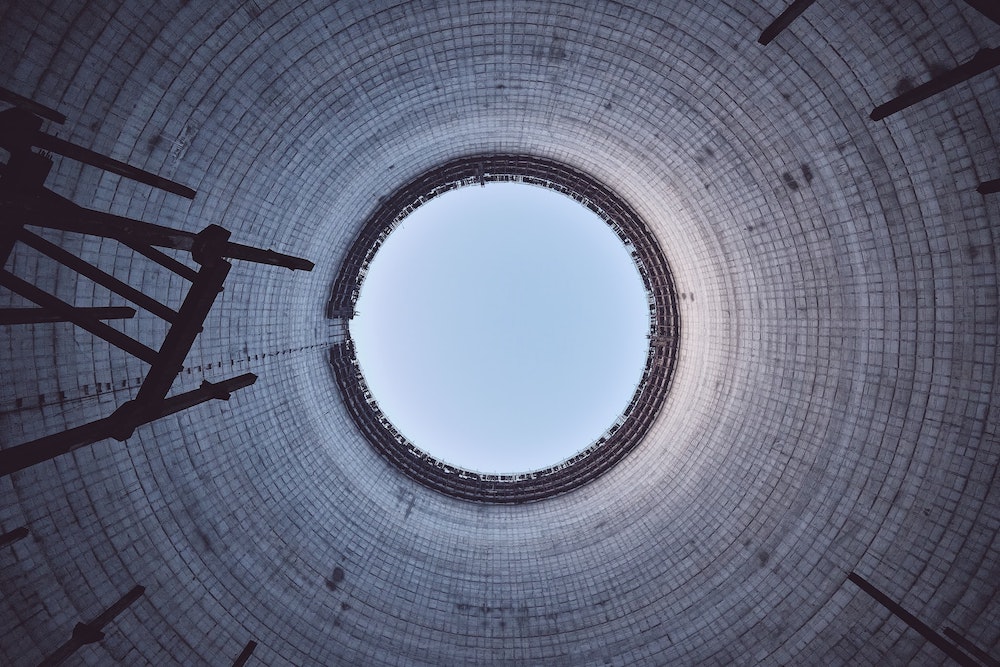
We’re proud to announce that Joseph Ash Galvanizing in Chesterfield has again been granted ‘Fit for Nuclear’ status (F4N), and we’re still the only galvanizer in the UK to be accredited.
Developed by the Nuclear AMRC with the support of its top-tier partners (including new build developers and the Nuclear Decommissioning Authority), F4N is a unique service to help UK manufacturing companies bid for work in the nuclear supply chain and measure their operations against the standards required to supply the nuclear industry.
Being granted F4N is a stringent process, and we’re pleased to be re-awarded. It demonstrates not only our excellent procedural input but also the high level of quality we consistently achieve.
As a commitment to our continued participation – and as a supplier to the nuclear industry – we will continue to be monitored by an F4N Industrial Advisor (IA). We’ll also be required to continually upload periodic updates to our action plan / continuous sustainable improvement plan, ensuring that we address any areas identified on the nuclear checklist.
Please click here to see our F4N certificate.
Many thanks to everyone at Joseph Ash Galvanizing who has worked hard to achieve this status. Thank you also to F4N for granting us the certificate. We look forward to our growing relationship with the nuclear industry.
(Photo by Mick De Paola on Unsplash)
Next page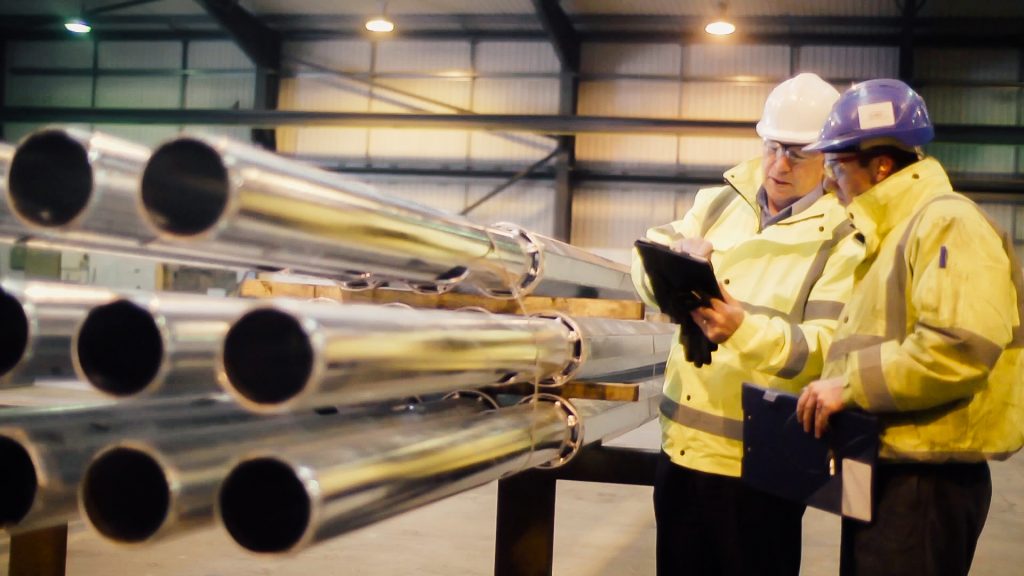
Following World Environment Day at the weekend, the Joseph Ash Group has designated the first week of June to be ‘ESG Week’. During this week, we’re raising awareness of the environment and social and governance issues affecting our colleagues, clients, and suppliers.
This is the first year for our new annual event, and so far this week, we’ve delivered presentations on ‘What is ESG?’. We’ve also provided resources (posters and links to activities) to team members to help them understand some of the terminology used (e.g. ‘Carbon Neutral’, ‘Net Zero’, ‘Carbon Offsetting’). Plus, we’ve shared advice on being more energy, waste and water conscious both at work and at home.
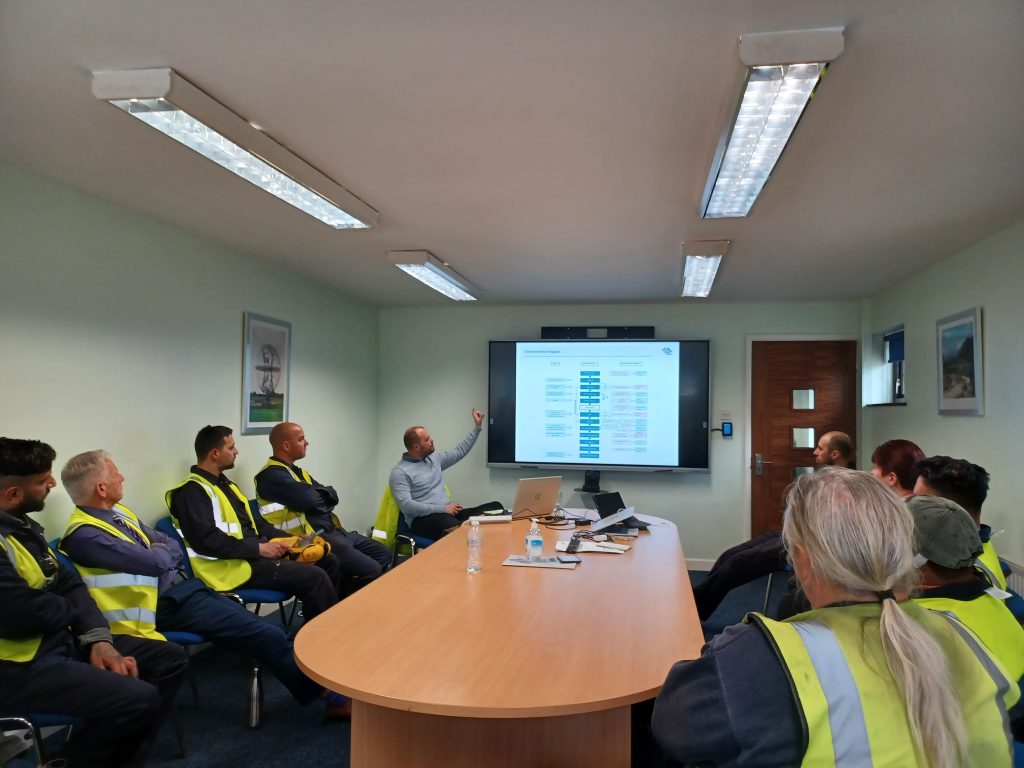
Later this week, we’ll be conducting safety tours to reinforce the importance of health and safety in the workplace.
Here are some of the important topics we’re covering:
Environment
- Compliance with all environmental legislation
- Minimise all negative environmental impacts from our operations – emissions to air, water and land
- Minimise our resource usage and support a circular economy
- Reduce our carbon emissions and work towards achieving Net Zero carbon emissions.
Social
- Managing the risks to the health, safety & wellbeing of our colleagues and other stakeholders
- Improve the talent and diversity of our colleagues and create a value-based culture within the business
- Positively engage with our local community by providing support to local initiatives and charities
- Supporting apprenticeships.
Governance
- Effectively identifying, mitigating, and controlling business risk
- Operating in compliance with all applicable legislation
- Ethically conducting business and working with integrity
- Using reputable suppliers and working with customers that support our values
- Ensuring all decision-making is carried out with our values, strategy and impacts considered.
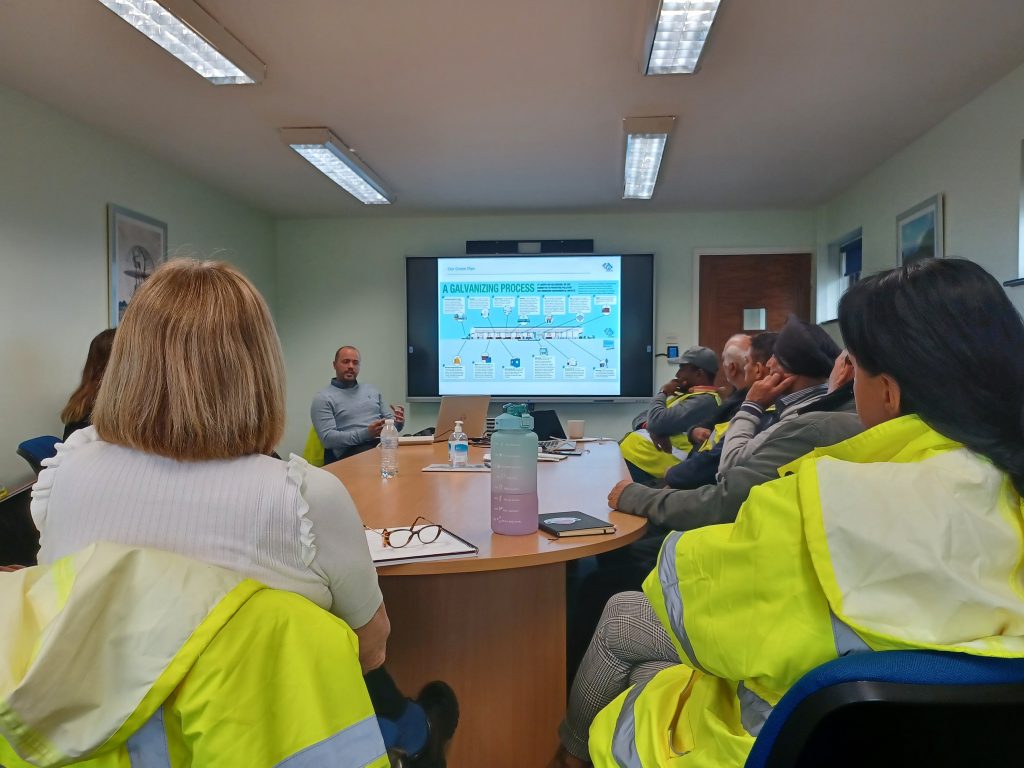
If you want to know more about ESG across the Joseph Ash Group (Joseph Ash Galvanizing and Premier Galvanizing), please get in touch. We’d love to tell you all about it!
Next page